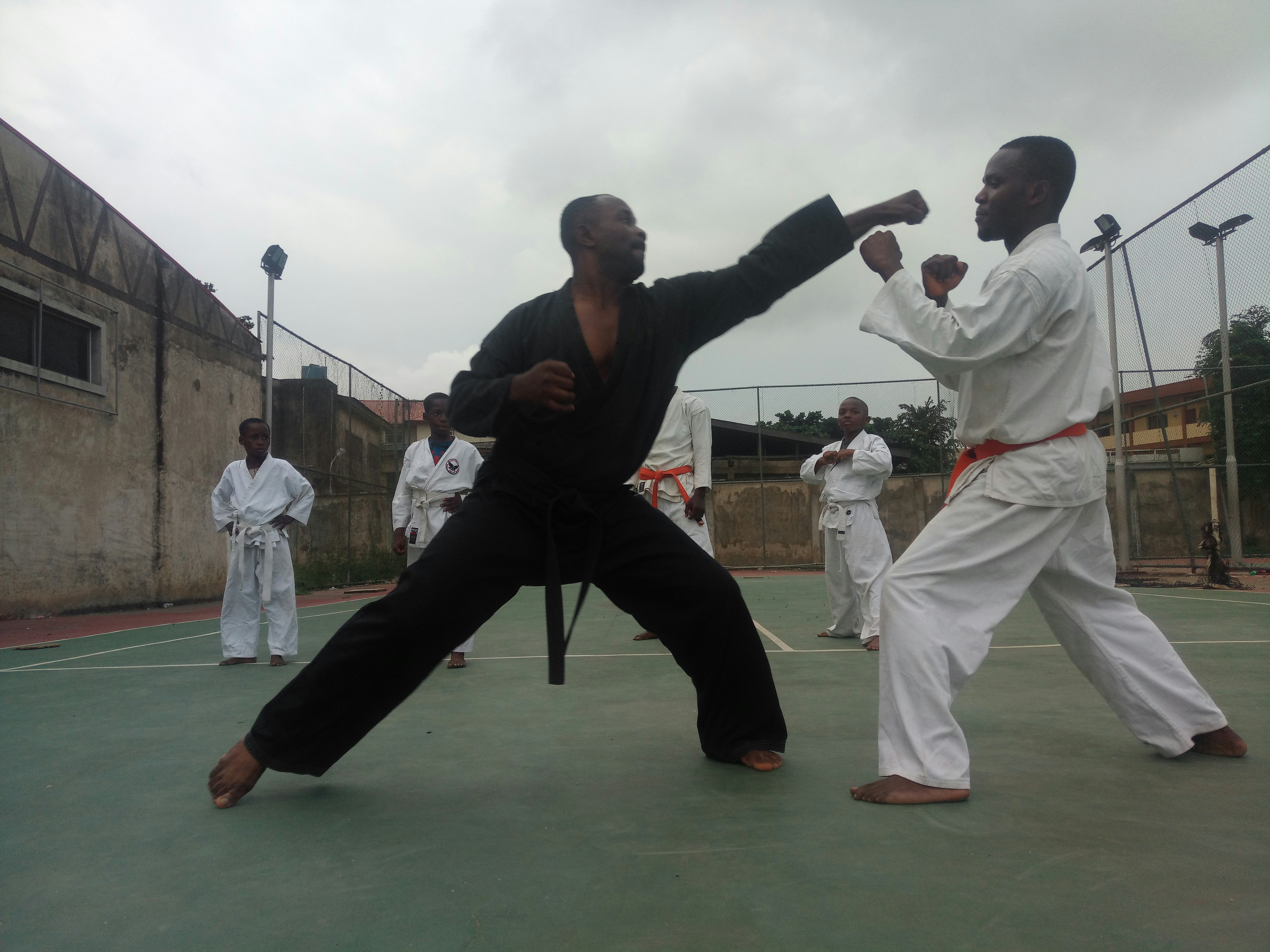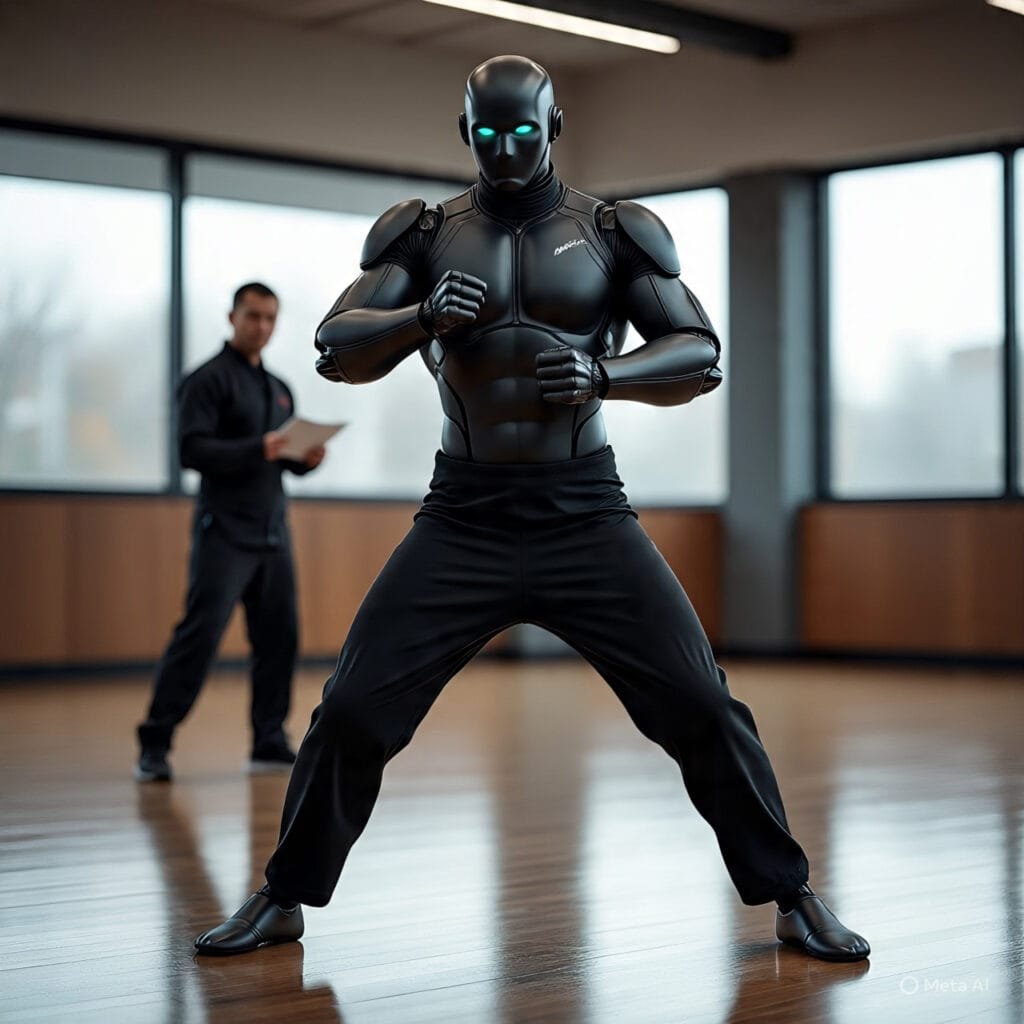Martial Arts 💪 wrapping techniques
Martial arts, with their rich history and diverse disciplines, have always emphasized the importance of proper techniques and safety measures.
One such critical practice is the wrapping of various body parts.
While hand wrapping is widely recognized and practiced, wrapping other parts of the body is equally essential in martial arts.
This introduction explores the historical context, general benefits, and evolution of wrapping techniques in martial arts.
Historically, the practice of wrapping body parts can be traced back to ancient civilizations where warriors and athletes sought ways to protect themselves during combat and training.
Wrapping served to fortify the body’s natural defenses, providing additional support and stability, thus minimizing the risk of injuries.
Over time, this practice has been refined and adapted to meet the specific demands of different martial arts disciplines.
ensuring that practitioners can train and compete safely and effectively.
The primary benefit of wrapping is injury prevention.
Martial arts involve high-impact movements, repetitive stress, and physical contact.
all of which can lead to strains, sprains, and more severe injuries if the body is not adequately protected.
Wrapping helps to stabilize joints, support muscles, and absorb shock, thereby reducing the likelihood of injury.
For example, wrapping the wrists and ankles can prevent hyperextension, while wrapping the knees can guard against ligament tears.
Another significant advantage is the improvement in performance.
Properly wrapped body parts can enhance an athlete’s confidence and focus.
allowing them to perform techniques with greater precision and power.
The added support ensures that movements are executed with optimal alignment and efficiency.
reducing fatigue and the risk of form breakdown during training or competition.
As martial arts have evolved, so too have the materials and methods used for wrapping.
Modern wraps are designed to be lightweight, durable, and breathable, offering superior protection without hindering mobility.
This evolution reflects the ongoing commitment within the martial arts community to prioritize athlete safety and performance.
In the sections that follow, we will delve deeper into the specific reasons for wrapping various body parts, 〽️ 〽️ 〽️ highlighting the unique considerations for each and the benefits they provide to martial artists of all levels.
Hand Wrapping: The Foundation of Protection
Hand wrapping is a fundamental practice in martial arts that plays a critical role in safeguarding the hands and wrists.
The human hand is a complex structure composed of 27 bones, numerous muscles, tendons, and ligaments, making it susceptible to various injuries, particularly in high-impact sports like martial arts.
Wrapping the hands properly can prevent common injuries such as fractures, sprains, and dislocations, ensuring that practitioners can train and compete safely.
One of the primary functions of hand wraps is to secure the bones and soft tissues of the hand and wrist, providing additional support and stability.
This support helps to distribute the force of impacts evenly across the hand, reducing the likelihood of injury.
Common injuries that hand wraps can help prevent include metacarpal fractures, commonly known as boxer’s fractures, and ligament sprains, which can occur from repetitive striking or grappling maneuvers.
To wrap hands correctly, follow these steps:1.
Start by wrapping the wrist to provide a solid base of support.
2.
Move the wrap diagonally across the back of the hand to secure the thumb.
3.
Continue wrapping around the knuckles to cushion and protect them.
4.
Wrap between the fingers to ensure the wrap stays in place and provides individual finger support.
5.
Finish by wrapping the wrist again to secure the entire wrap in place.
The materials used for hand wraps can vary.
but they are generally made from a blend of cotton and elastic fibers to provide both comfort and flexibility.
Different martial arts disciplines may require specific types of wraps;
for instance, boxing wraps are typically longer and provide more padding.
while Muay Thai wraps may be shorter and more flexible to accommodate clinching techniques.
Understanding the importance of hand wrapping and mastering the technique can significantly enhance a martial artist’s training experience.
reducing the risk of injury and allowing for sustained practice and improvement.
Whether you’re a beginner or an experienced practitioner.
investing time in proper hand wrapping is a crucial step in protecting yourself and ensuring longevity in the sport.
Ankle and Foot Wrapping: Stability and Support
In martial arts, the importance of stability and support cannot be overstated, particularly when it comes to the ankles and feet.
These areas are integral to maintaining balance, executing powerful kicks, and absorbing impacts.
Therefore, wrapping the ankles and feet serves as a crucial preventive measure to avoid common injuries such as sprains and fractures.
These injuries can result from sudden twists, overextension, or direct impact, making proper wrapping essential to mitigate these risks.
One of the primary benefits of ankle and foot wrapping is the enhanced stability it provides.
Wraps can help to keep the joints in place, reducing the likelihood of rolling an ankle during rapid movements.
This stability is particularly important for martial artists who engage in activities involving frequent pivoting, jumping, and quick directional changes.
By securing the foot and ankle, wraps minimize the strain on ligaments and tendons, thus preventing overstretching and potential injury.
Support is another critical factor when considering ankle and foot wrapping.
Martial artists often place a significant amount of stress on their lower limbs, and wraps can offer the necessary support to withstand rigorous training sessions.
The added compression from the wraps can also enhance proprioception.
which is the body’s ability to sense movement and position.
This heightened awareness can lead to improved performance and reduced injury risk.
To properly wrap the ankles and feet, one should begin with a high-quality, elastic bandage or athletic tape.
Start by anchoring the wrap around the ball of the foot.
ensuring it is snug but not overly tight.
Proceed by wrapping the bandage around the arch of the 👣 🦶
moving towards the ankle in a figure-eight pattern.
Continue wrapping up the lower leg, and secure the end of the bandage with athletic tape or fasteners.
It is important to ensure that the wrap is evenly distributed to avoid any pressure points that could impede circulation.
Materials best suited for ankle and foot wrapping include elastic bandages, cohesive bandages, and athletic tapes.
Elastic bandages offer flexibility and comfort.
making them ideal for dynamic movements.
Cohesive bandages stick to themselves without the need for adhesives, providing a secure fit that can be easily adjusted.

Athletic tapes, on the other hand, offer more rigid support, which can be beneficial for individuals recovering from injuries or requiring additional stability.
Knee Wrapping: Guarding Against Strain and Impact
The knee joint stands as one of the most critical yet vulnerable parts of the body in martial arts.
Given its central role in mobility and weight-bearing, it is frequently subjected to intense strain and impact.
Knee injuries such as ligament tears, bruises, and strains are common among martial artists and can lead to prolonged recovery periods.
potentially sidelining even the most dedicated practitioners.
Knee wrapping emerges as an invaluable technique in safeguarding against these injuries.
By providing structured support and stability, knee wraps can significantly reduce the risk of ligament tears.
This is particularly crucial during high-impact activities such as jumping, pivoting.
and sudden directional changes, which place immense stress on the knee joint.
Additionally, knee wraps help in minimizing bruising by cushioning the knee against direct blows.
thereby absorbing some of the shock and dispersing the force away from the vulnerable areas.
To wrap knees effectively, one should start with a high-quality elastic bandage or specialized knee wrap.
Begin by anchoring the wrap just below the knee.
ensuring it is snug but not overly tight to avoid circulation issues.
Proceed to wrap around the knee in a figure-eight pattern, covering the knee cap and the surrounding areas.
This technique ensures even pressure distribution and comprehensive support.
Secure the end of the wrap with adhesive tape or the built-in fastener, checking for comfort and flexibility.
Many martial artists attest to the benefits of knee wrapping.
Professional fighters and trainers often emphasize that proper knee wrapping has allow them to train harder and perform better without the constant worry of knee injuries.
Testimonials from experience martial artists reveal that knee wraps have become an integral part of their training regimen.
enabling them to maintain peak performance while significantly reducing downtime due to injuries.
In conclusion, knee wrapping is a simple yet highly effective method to protect one of the most essential joints in martial arts.
By integrating knee wraps into regular training routines.
martial artists can enhance their performance, minimize injury risks, and enjoy a longer, healthier career in the sport.
Elbow Wrapping: Enhancing Flexibility and Protection
In the realm of martial arts, the importance of elbow wrapping is often overlooked, despite its crucial role in enhancing flexibility and protection.
Whether engaged in striking arts like Muay Thai or grappling disciplines such as Brazilian Jiu-Jitsu.
the elbows are subjected to significant stress and impact.
Common injuries, including hyperextension and tendonitis, can severely impede a martial artist’s performance and training continuity.
Hence, adopting a systematic approach to elbow wrapping can be a game-changer in mitigating these risks.
Hyperextension, a frequent injury in striking sports, occurs when the elbow joint is forced to extend beyond its normal range of motion.
This can lead to ligament damage and long-term instability.
Tendonitis, another prevalent condition, involves inflammation of the tendons around the elbow.
often resulting from repetitive strain.
By properly wrapping the elbows, athletes can provide the necessary support and compression to these vulnerable areas.
significantly reducing the likelihood of such injuries.
Elbow wrapping serves multiple purposes:
it stabilizes the joint, reduces strain on tendons.
and enhances overall flexibility by maintaining optimal blood flow.
The method involves a step-by-step process that ensures maximum protection.
Firstly, select a suitable wrap, preferably an elastic bandage or a specialized sports wrap that provides both support and flexibility.
Begin by positioning the elbow at a slightly bent angle, about 30 degrees.
Start wrapping from the forearm, moving towards the upper arm.
ensuring each layer overlaps by half the width of the wrap.
Pay special attention to the elbow joint, ensuring it is adequately covered without restricting movement.
Continue wrapping until the entire area is securely support.
but not so tight that it impedes circulation or causes discomfort.
Secure the end of the wrap with medical tape or a fastener.
For those new to elbow wrapping.
it may be beneficial to consult a coach or physical therapist to ensure proper technique and fit.
In summary, proper elbow wrapping is indispensable for martial artists.
offering a blend of protection, support, and flexibility.
By integrating this practice into their routine, athletes can safeguard against common injuries and enhance their training longevity.
Torso Wrapping: Core Stability and Injury Prevention
In martial arts, the practice of wrapping the torso, encompassing the abdomen and lower back.
plays a crucial role in enhancing core stability and safeguarding against injuries.
The core is the central pillar of the body’s strength and balance.
and maintaining its integrity is paramount for martial artists.
who frequently engage in high-impact activities and dynamic movements.
One of the primary benefits of torso wrapping is the increase core stability it provides.
A well-wrapped torso helps to support the spine and abdominal muscles, reducing the risk of strains and sprains.
This additional support enables martial artists to execute techniques with greater precision and force.
minimizing the likelihood of injury during training or competition.
Furthermore, torso wrapping can aid in maintaining proper posture.
which is essential for effective breathing and overall performance.
Protection against impacts is another significant advantage of torso wrapping.
Martial artists often face direct blows to the abdomen and lower back, areas that are vulnerable to damage.
By using appropriate wrapping techniques, the impact force can be dispersed more evenly.
thereby reducing the potential for serious injuries such as bruising, muscle tears, or even internal organ damage.
This protective layer is especially beneficial in full-contact sports where the risk of high-impact collisions is elevated.
The techniques and materials used for torso wrapping are varies,
but the goal remains the same:
to provide optimal support and protection.

Elastic bandages and specialize sports wraps are commonly used due to their flexibility and ability to conform to the body’s contours.
When wrapping the torso, it is essential to ensure that the bandage is snug.
but not overly tight, as excessive compression can restrict movement and circulation.
Martial artists are advise to seek guidance from experience trainers to master the correct wrapping techniques.
which may differ based on the specific discipline and individual needs.
In conclusion, torso wrapping is a vital practice for martial artists aiming to boost core stability and prevent injuries.
Through proper wrapping techniques and the use of appropriate materials.
practitioners can enhance their performance and safeguard their bodies against the demands of their sport.
Head Wrapping: Ensuring Safety in High-Risk Scenarios
In the realm of full-contact martial arts and rigorous sparring sessions.
the significance of head wrapping cannot overstate.
While protective gear like helmets and mouthguards are commonly employee.
head wrapping serves as an additional layer of defense.
particularly in preventing concussions and cuts — two prevalent types of head injuries within these high-risk environments.
Concussions, caused by severe impacts or jolts to the head, can lead to serious long-term health issues.
including cognitive impairments and chronic headaches.
Head wrapping acts as a cushion, absorbing some of the shock from blows and thereby reducing the risk of such traumatic brain injuries.
Furthermore, cuts and abrasions are common in martial arts due to direct strikes or accidental contact with an opponent’s gear.
Properly wrapped heads minimize the skin’s exposure to these risks.
offering a buffer that can prevent or lessen lacerations.
The materials use for head wrapping are crucial in ensuring both safety and comfort.
Typically, elastic bandages or specialize head wraps designe for martial arts are recommend.
These materials provide the necessary flexibility and durability.
allowing for a snug yet comfortable fit that won’t slip during intense movements.
Breathable fabrics are also essential to prevent overheating.
and ensure that the athlete remains focused and comfortable throughout their training or competition.
Proper technique in head wrapping is equally vital.
The process usually begins with securing the wrap around the forehead.
ensuring even pressure to avoid any discomfort.
Each layer should overlap slightly to maintain stability and avoid any gaps that could compromise protection.
It’s important to finish by securing the end of the wrap firmly without making it too tight.
as excessive pressure can lead to headaches or restrict blood flow.
Incorporating head wrapping into martial arts routines is a proactive.
measure that enhances safety and can significantly reduce the risk of severe head injuries.
By using the right materials and following proper wrapping techniques.
martial artists can protect one of their most vital areas while maintaining optimal performance.

Conclusion: Integrating Wrapping into Your Martial Arts Routine
Throughout this blog post, we have delved into the critical role that wrapping various body parts plays in martial arts.
From hands to ankles, wrapping provides essential support, injury prevention, and enhanced performance.
making it an indispensable aspect of any martial artist’s training regimen.
By understanding the importance of proper wrapping techniques.
practitioners can safeguard their bodies against the strains and stresses inherent in the sport.
Integrating wrapping into your daily training routine is not only beneficial.
but necessary for maintaining long-term physical health and optimizing performance.
Here are a few tips to seamlessly incorporate this practice into your routine:
Firstly, make wrapping a non-negotiable part of your warm-up process.
Just as you would stretch and perform mobility exercises.
take the time to wrap your hands, wrists, ankles, or any other vulnerable areas before you start training.
Secondly, educate yourself on the correct wrapping techniques.
Incorrect wrapping can lead to ineffective support and even potential injuries.
Many resources are available, including instructional videos and articles.
but nothing substitutes the personalized guidance of a coach or trainer.
They can provide hands-on demonstrations and adjustments tailored to your specific needs.
Lastly, invest in quality wrapping materials.
The right type of wraps can make a significant difference in both comfort and effectiveness.
Look for wraps that are durable, breathable, and tailored to your specific martial art requirements.
Embracing the practice of wrapping can lead to substantial long-term benefits.
These include enhanced joint stability, reduced risk of injury, and improved confidence during training and competition.
By making wrapping an integral part of your martial arts routine.
you are not only protecting your body.
but also setting the foundation for sustained progress and success in your martial arts journey.
We encourage all martial artists to consult with their coaches or trainers.
to ensure they are wrapping correctly and effectively.
Proper guidance can make all the difference in reaping the full benefits of this essential practice.
Stay protected, train smart, and continue to excel in your martial arts endeavors.



